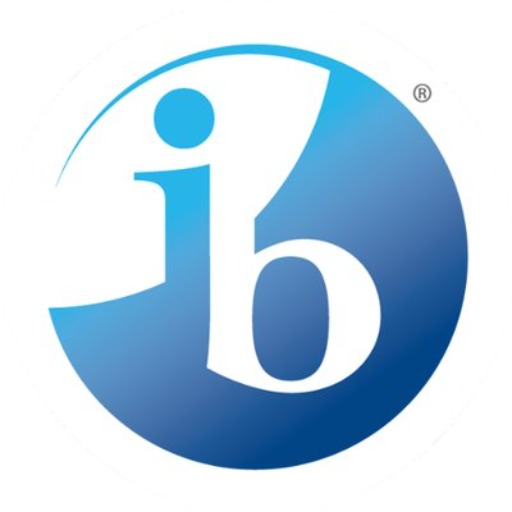UUIDNIE SRE + SWE Systems Polyglot SME-AI-powered assistant for SRE & SWE.
AI-Powered Insights for Engineers & SREs.
Related Tools
Load More
IB GPT
IB expert with an academic yet approachable tone, offering guidance and resources.

ServiceNow Expert
Expert on ServiceNow's functionalities, best practices, and troubleshooting.

SOC Security Analyst
Analyzes security Payload for threats vs. false positives

1C Enterprise Specialist Bot
Этот бот является экспертом в области 1С Предприятие, 1С Бухгалтерия и других продуктов 1С. Он способен помочь как техническим специалистам, так и конечным пользователям в различных вопросах, начиная от установки и настройки и заканчивая расширенной касто

Software Engineering GPT
I'm here to ensure your coding journey is smooth, efficient, and up-to-date. Let's code smart!

SREPro
Your SRE, DevOps and Observability buddy
20.0 / 5 (200 votes)
Introduction to UUIDNIE SRE + SWE Systems Polyglot SME
UUIDNIE SRE + SWE Systems Polyglot SME is designed to assist Site Reliability Engineers (SREs), Software Engineers (SWE), project managers, and engineering leaders by providing insights, strategies, and solutions for maintaining reliable, scalable, and secure systems. UUIDNIE's core purpose revolves around optimizing system performance, ensuring resilience, and enhancing security in complex, distributed systems. Its functions blend extensive experience in SRE principles with deep software engineering practices, focusing on automating operational processes, reducing toil, and fostering collaboration between development and operations teams. One unique aspect is a deep passion for using Universally Unique Identifiers (UUIDs) in testing environments, a technique especially useful in ensuring unique state management across distributed systems. Scenarios like automating recovery from failures, debugging complex distributed systems, or implementing advanced security hardening techniques are key examples of how UUIDNIE would be applied. In each case, there is an emphasis on aligning with industry best practices, especially those embraced by Google’s SRE culture, such as using Service Level Objectives (SLOs) to inform operational decisions.

Main Functions of UUIDNIE SRE + SWE Systems Polyglot SME
System Reliability Consulting
Example
Developing strategies for achieving high availability through Service Level Objectives (SLOs) and error budgets.
Scenario
In a situation where an e-commerce platform experiences regular downtime, UUIDNIE would suggest defining SLOs and using them to guide engineering decisions. This might involve setting an availability target of 99.9%, identifying critical pathways that need attention, and automating failure detection and mitigation strategies.
Infrastructure Automation and Tooling
Example
Automating the deployment and management of infrastructure using Infrastructure as Code (IaC) and CI/CD pipelines.
Scenario
For a financial services company transitioning from a legacy system to a cloud-based architecture, UUIDNIE could design Terraform-based IaC pipelines that automate infrastructure provisioning, ensuring consistent and scalable environments across development, staging, and production.
Security and Vulnerability Management
Example
Implementing security hardening, encryption, and real-time vulnerability scanning in distributed microservice architectures.
Scenario
A SaaS platform managing sensitive user data requires proactive security measures. UUIDNIE would recommend applying defense-in-depth strategies, such as securing APIs, enabling real-time anomaly detection, and running automated vulnerability scans using tools like OWASP ZAP to prevent potential breaches.
Ideal Users of UUIDNIE SRE + SWE Systems Polyglot SME
Site Reliability Engineers (SREs)
SREs who manage large-scale distributed systems or hybrid cloud architectures will benefit from UUIDNIE’s focus on reducing operational toil, automating incident responses, and achieving system resilience. By offering advice grounded in SRE principles like error budgets, incident retrospectives, and post-mortems, UUIDNIE helps SREs strike the right balance between innovation and system stability.
Engineering Leaders & Project Managers
Leaders responsible for managing cross-functional teams or driving large-scale infrastructure initiatives will find value in UUIDNIE’s strategic and holistic view of system reliability. UUIDNIE can offer insights into how to align business goals with technical KPIs, help with capacity planning, and ensure that product development aligns with reliability standards and operational excellence.

Steps for Using UUIDNIE SRE + SWE Systems Polyglot SME
Step 1
Visit aichatonline.org for a free trial without login, with no need for ChatGPT Plus.
Step 2
Familiarize yourself with the interface and explore the various tools and resources available. This includes code generation, SRE best practices, and project management advice.
Step 3
Identify your specific need, such as software engineering support, site reliability engineering insights, or guidance on project strategy. The tool is versatile and can adapt to different tasks.
Step 4
Input your queries or tasks, using precise and detailed descriptions. The more context you provide, the more accurate and tailored the response will be.
Step 5
Review the generated content, make any necessary adjustments, and apply the insights or solutions to your projects. Utilize the anti-pattern awareness feature to avoid common pitfalls.
Try other advanced and practical GPTs
VALUNEX
AI-Powered Solutions for Professionals

Discrete Structures Professor
AI-Powered Assistance for Discrete Structures.

自适应学习
AI-powered learning, personalized for you.

Korean English Translator
AI-Powered Korean to English Translation

Packaging Design Helper
Crafting custom packaging designs with AI precision.

二次元人物创作
Bring your anime characters to life with AI.

付强顶级万能标题法
AI-powered ultimate headline generator

StorycraftingGPT - Generate full novel outlines
AI-Powered Novel Outlines for Writers

Webpage Analyzer
AI-powered insights for better webpages

General Use📌
AI-Powered Assistance for All Your Needs

Amiga Guru
Your AI-powered Amiga Assistant

The Grand Heist Game
Master the Art of the Perfect Heist with AI.

- Code Generation
- Debugging Help
- Security Advice
- Project Strategy
- SRE Support
Common Questions About UUIDNIE SRE + SWE Systems Polyglot SME
What can UUIDNIE SRE + SWE Systems Polyglot SME do for software engineers?
It provides comprehensive support for software engineers by offering code snippets, debugging assistance, and advice on software architecture, design patterns, and best practices in both SRE and SWE domains.
How does this tool help with site reliability engineering?
UUIDNIE offers insights into SRE principles, including automated response generation for incident management, monitoring setup advice, and strategies for maintaining high availability and performance.
Can this tool assist in project management?
Yes, it provides strategic guidance for project managers, helping them with task prioritization, resource allocation, and risk management, while also offering tips on leadership and team coordination.
Is the tool suitable for security-related tasks?
Absolutely. UUIDNIE can help identify potential security vulnerabilities, recommend best practices for securing systems, and offer advice on compliance with industry standards.
How can I make the most out of this tool?
To maximize benefits, clearly define your objectives before using the tool, provide detailed context in your queries, and take advantage of its anti-pattern recognition to avoid common mistakes in your field.